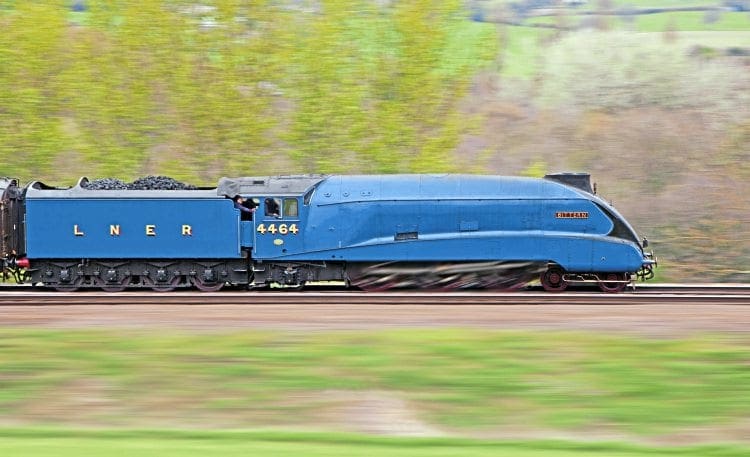There has been considerable debate recently about raising the speed limit for main line steam to 90mph and Tornado is about to undertake some experimental runs. John Forman argues that it is time for a more realistic assessment of high speed steam performance on the main line.
First of all, it is completely wrong to belittle a steam locomotive’s ability by pretending that it is incapable of still performing at its design output.

The 75mph straightjacket is a classic “catch-22” situation – assert loudly enough that steam cannot exceed 75mph and, hey-presto, you have the perfect self-fulfilling prophecy! Since it can’t go above 75mph, then clearly it is a total nuisance on the main line. But in fact the 75mph limit is an arbitrary and emotive limitation, devoid of engineering integrity, but which nevertheless condemns a steam charter to visit every siding on the main line, annoying absolutely everyone – passengers and operators alike.
Enjoy more Heritage Railway reading in the four-weekly magazine.
Click here to subscribe & save.
If you deliberately hamstring a racehorse, then why complain that it can’t keep up with the field? An engine which is passed as fit to run on the main line should surely be allowed to run at its design speed – as indeed are preserved diesels such as Brush Type 4s or Deltics, which are both almost as old as Duke of Gloucester, much older than Tornado, and have certainly had a far harder life! Design speed for the modern Pacifics was generally well above the blanket signalling limit of 90mph, and even LMS ‘Black Five’ 4-6-0s were permitted – indeed expected – to do this speed when circumstances required.
So let’s examine this dismal 75mph mantra in more detail. It is glibly asserted that steam seldom went above 75mph in steam days, and 90mph was virtually unheard of. What is not said is that this was because BR had a line limit of 90mph anyway, due mainly to clockwork signalling controlled by manual ‘boxes at three mile intervals, and unenterprising schedules because the inevitable penalty for speeding was to catch up with an unfitted coal train hauled by an 0-6-0. Conditions which simply do not exist on today’s main lines!
Read more in Issue 226 of HR – out now!
Advert
 Enjoy more Heritage Railway reading in the four-weekly magazine. Click here to subscribe.
Enjoy more Heritage Railway reading in the four-weekly magazine. Click here to subscribe.




